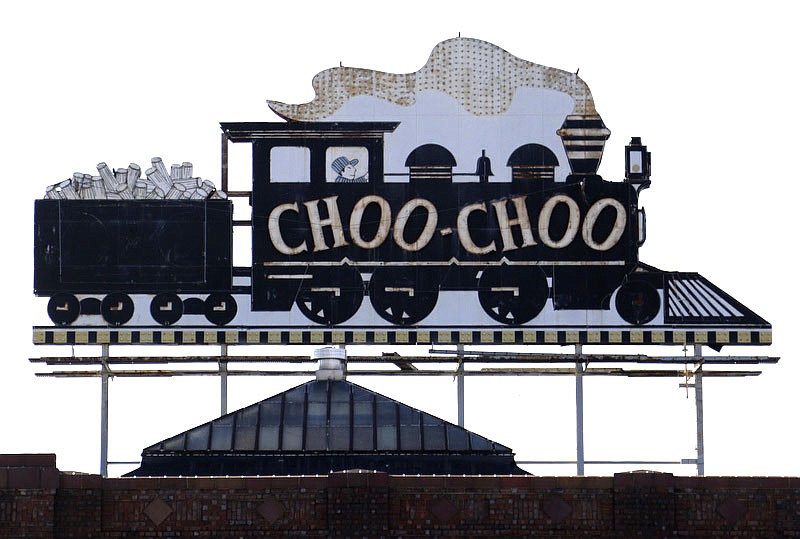A billion-dollar transaction involving a storied Chattanooga entity was announced recently, but the planned transfer barely caused a ripple.
The announcement was the upcoming sale of the Cincinnati Southern Railway -- 337 miles of track between Cincinnati and Chattanooga, covering some 9,500 acres of land, owned by the city of Cincinnati -- to Atlanta-based Norfolk Southern Railway for $1.62 billion.
The Cincinnati, New Orleans and Texas Pacific Railway Company, a subsidiary of Norfolk Southern, had been operating the railway under a lease expiring in 2026. The sale is expected to be completed in 2024 and is not expected to alter the up to 30 trains that travel the route daily.
However, the railway has been a major part of commerce for both Cincinnati and Chattanooga dating back to the route's completion in 1879.
By the 1850s, according to a 1969 history of the railway in Chattanooga by David Steinberg in the Chattanooga Free Press, Cincinnati was seeking a southern market for goods manufactured in the Midwest and wanted a leg up on its competition in St. Louis and Louisville, Ky., which had closer river routes.
The Civil War disrupted the city's plans, but in 1866 they began anew. Several private plans for a railway began and ended without a route being built before Cincinnati itself was approached for financing. Ohio law didn't allow for a city to be a stockholder in any company that might build a railway, but it didn't seem to forbid such a thing if the city alone financed it.
The Cincinnati Southern Railway, thus, was born, and the next task was the selection of a southern terminus. That kicked off a competition among Nashville, Knoxville and Chattanooga. A Nashville route was quickly eliminated as being too far west. A Knoxville route seemed the shortest and most practical, but Chattanooga's better railroad connections to the South Atlantic seaboard kept it in the competition.
A first vote by the committee considering the two sites ended in a tie, but on the second ballot -- probably due to a never realized promise by the Alabama & Chattanooga Railroad to build a route to meet the Cincinnati Southern at the Kentucky state line -- Chattanooga won out. A 1911 article also suggested that President William Howard Taft, who had the time was a judge on a Cincinnati court, helped the Scenic City cause by naming to the railway board members who were partial to the Chattanooga route.
After much haggling with the state of Kentucky over rights-of-way and use of bridges, the line began to be built. By 1876, the project was -- shades of the present day -- over budget, more than $9.8 million having been spent. The railroad trustees assured Cincinnati that another $6 million would finish the job, and, after the passage of a bill in the Ohio legislature, the city's residents were allowed to vote on whether the city could issue bonds for the remaining amount. Despite the fierce opposition of local newspapers, the city's voters approved the bonds.
That amount still wasn't enough, and this time voters wouldn't approve an additional $2 million in bonds. But the Ohio legislature passed a bill that contracts could be let if the expenses were under $2 million. Ultimately, Cincinnati voters approved the new bond, and work continued after a holdup while the state Supreme Court considered whether the most recent law was constitutional. The contractor had a deadline of Dec. 10, 1879, and at 9 that evening a test engine and tender arrived in Chattanooga, having completed the route.
The final cost was $20,300,000, which is $604,964,360 in today's dollars.
The railway line, at the time, contained the first cantilever-type bridge to be built in the United States, the highest bridge span in the U.S., the longest truss bridge span in the world, 105 bridges in all, 27 tunnels in one span of 150 miles, and offered the first north-south passenger service.
According to Steinberg, Cincinnati had to turn out its street lamps on moonlit nights to help meet the interest payments on its railway, but it eventually reaped a great return on its investment.
As for Chattanooga, historian Charlie D. McGuffey once wrote that the railway had a major role "in Chattanooga's future, the question of whether it would ever be a great city or not."
Our city itself had to rally the public in order to issue $100,000 in bonds to assist with the railway's southern terminus.
Since then, a 1911 Chattanooga Daily Times editorial opined that the railroad "gave the impetus for the magnificent city we are erecting here at its southern terminus," and a 1939 Chattanooga Free Press editorial called the railway "perhaps the greatest single event in Chattanooga's business history."
The railway, which made the city a rail center for commerce, remains tied to the city's lore.
The first "Chattanooga Choo Choo" -- dubbed by a newspaper reporter -- was a Cincinnati Southern steam passenger train departing Cincinnati on March 5, 1880, but the nickname did not become tied to the city until the big-band song of the same name by Glenn Miller in the 1940s.
The name remains as the moniker of the hotel/restaurant complex at the city's former Terminal Station, from which the last Cincinnati Southern passenger train left in 1970.
Though the transaction may have made but a ripple in the headlines, what will be transacted played an outsized part in the city's growth and development.
